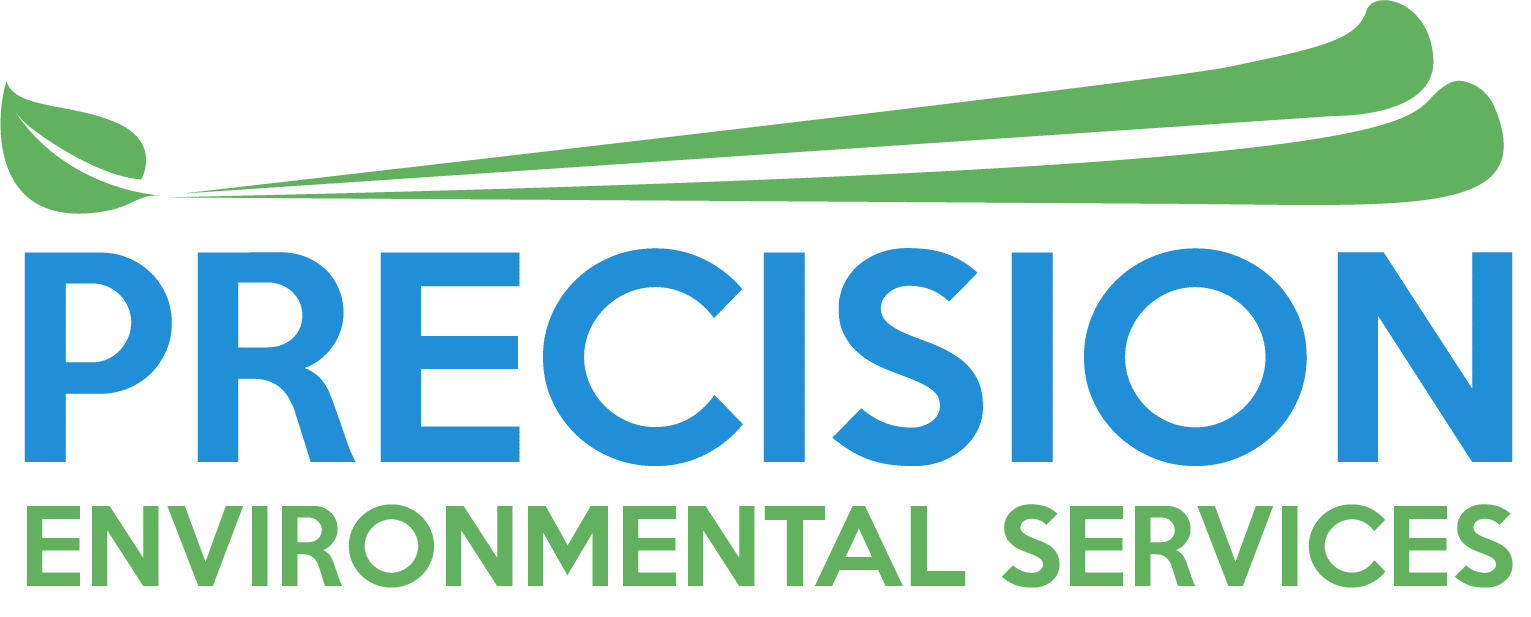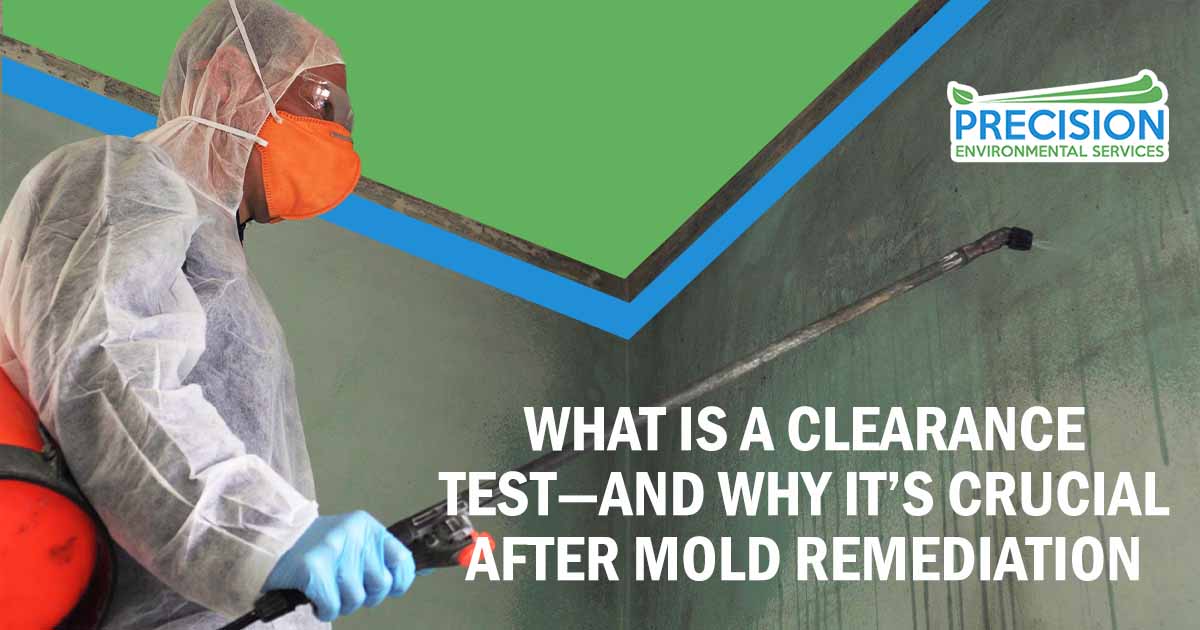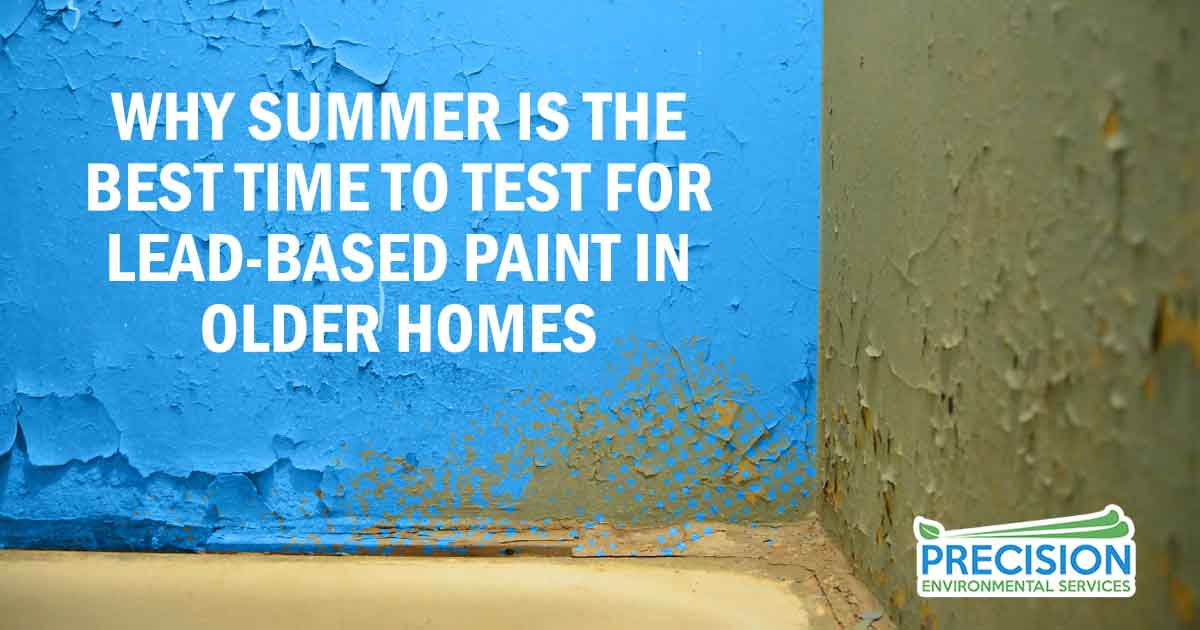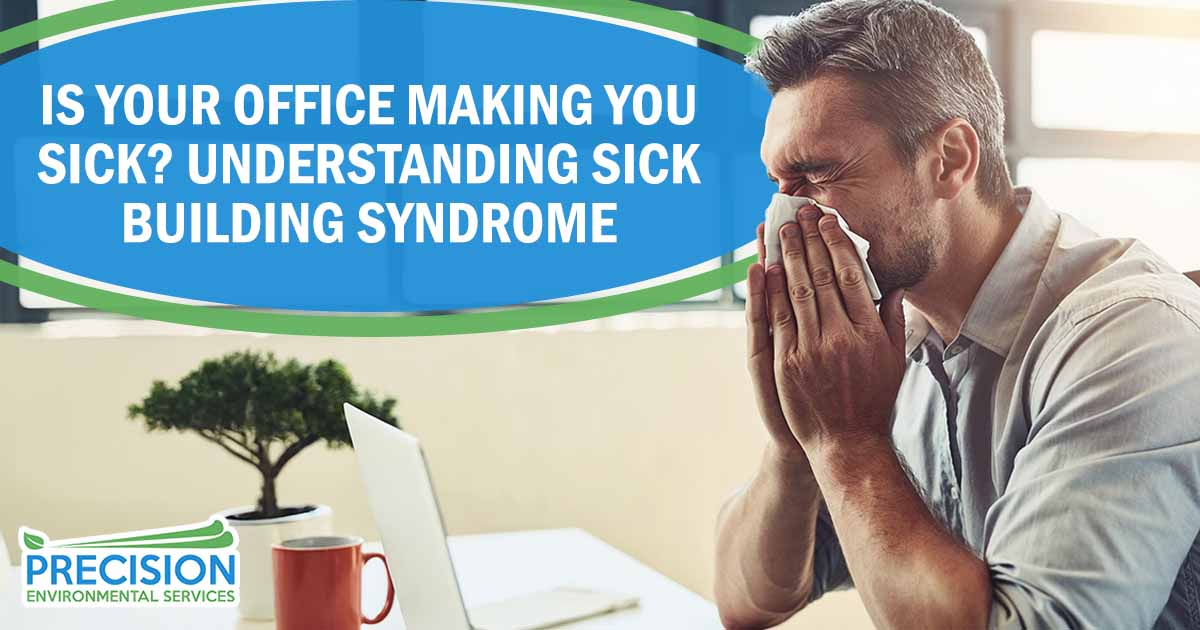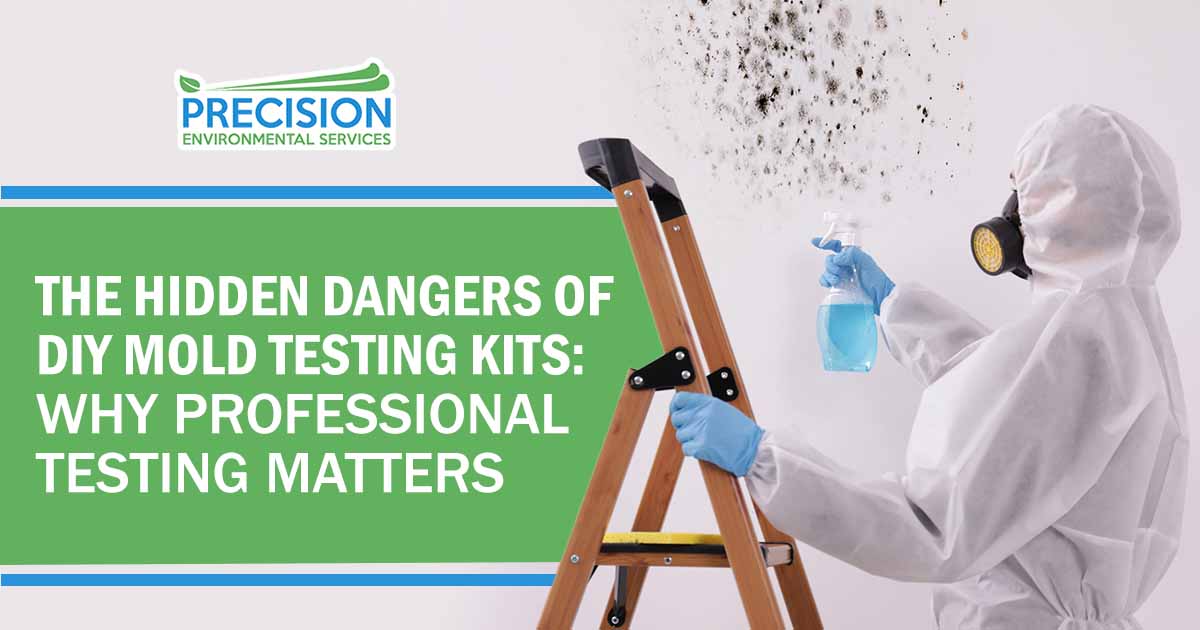After completing mold remediation, one of the most important final steps is mold clearance testing. This process confirms whether the remediation was successful and whether the property is safe for occupancy. Homeowners and businesses in Texas that recently addressed mold issues can benefit from scheduling this type of inspection. Precision Environmental Services offers detailed clearance testing following mold removal and remediation, which can be reviewed on their mold remediation service page.
What Is Mold Clearance Testing?
Mold clearance testing after remediation is a professional inspection that verifies whether a mold remediation project has effectively removed all mold contamination. This step is performed after the cleaning and removal process is complete and is typically conducted by a third-party professional to maintain objectivity.
The clearance test checks whether the affected area meets acceptable indoor air quality standards and confirms that mold spores are no longer present at harmful levels. It includes a visual assessment, air sampling, and lab analysis. The goal is to ensure that not only has mold growth been cleaned but also that conditions are no longer favorable for it to return.
In Texas, clearance testing is highly recommended after remediation—especially when the affected space exceeds 25 contiguous square feet, involves commercial property, or when health concerns remain. While not always required by law, a clearance test provides peace of mind and can help prevent liability issues or future mold regrowth.
Why Mold Clearance Testing Is Crucial After Mold Remediation
Completing mold remediation without a clearance test can leave uncertainty about whether the cleanup was truly successful. Mold spores are microscopic and can remain in the air or on surfaces even after visible mold has been removed. Without testing, there is no way to confirm whether hidden mold remains or if air quality has returned to acceptable levels.
- Verifies Remediation Was Successful – Clearance testing confirms that the mold remediation met recognized standards. It evaluates whether mold spore levels are comparable to those outdoors and ensures that no remaining contamination remains. For both residential and commercial properties, this verification assures that the space is once again safe for occupants.
- Helps Prevent Health Risks – Even after remediation, poor indoor air quality can pose a threat to people with respiratory conditions, allergies, or immune sensitivities. A clearance test measures airborne mold spores to determine if the environment is safe, reducing the risk of ongoing health issues caused by exposure to hidden mold.
- Supports Real Estate or Rental Transactions – In Texas, clearance testing after mold remediation is often requested during real estate transactions or when a rental property must meet tenant safety standards. A formal clearance report provides documentation that mold issues were resolved, which can help avoid legal disputes or delays in closing or leasing.
- Reduces Liability Concerns – From a risk management standpoint, skipping mold clearance testing can create potential exposure to liability. If a buyer, tenant, or employee later claims health issues from mold exposure, not having documented clearance may leave property owners vulnerable to disputes or claims.
What Does a Mold Clearance Test Include?
Mold clearance testing after remediation follows a structured process that includes visual inspections, air sampling, and lab-based analysis. Each component of the test plays a specific role in verifying that the mold problem has been effectively addressed and that the environment is safe for reentry.
Visual Mold Inspection
The clearance process begins with a visual inspection of the remediated area. The inspector looks for any signs of remaining mold, water damage, or moisture. They also evaluate whether contaminated materials were properly removed and replaced and if the area was thoroughly cleaned and dried.
Air Sampling
Air sampling is a crucial component of mold clearance testing. Samples are taken from both inside the treated area and outdoors to compare spore levels. The goal is to ensure indoor air quality is similar to or better than the outdoor baseline, indicating that mold has been adequately removed.
This part of the test helps detect invisible mold spores that may still be present in the air, even if surfaces appear clean. Elevated spore counts may indicate that remediation was incomplete or that mold is present in other undetected areas.
Surface Sampling (When Needed)
In some cases, surface samples are collected using swabs or tape lifts to test specific materials. This is typically done when an inspector observes discoloration or staining but requires laboratory confirmation to determine whether it’s mold. Surface testing can also verify that cleaned surfaces do not have lingering contamination.
Moisture and Humidity Checks
Because mold thrives in damp conditions, inspectors may also use moisture meters or thermal imaging to check for water intrusion or humidity problems. If excess moisture is still present, it increases the risk of mold returning, regardless of how thorough the cleaning was.
Laboratory Analysis
All air and surface samples are sent to a certified laboratory for analysis. The lab identifies the types of mold spores present and their concentration levels. Results are typically returned within 24 to 48 hours and form the basis of the final clearance report.
Final Report and Clearance Status
Once lab results are available, the inspector compiles a detailed clearance report. This includes:
- Descriptions of testing methods
- Locations and types of samples
- Spore count comparisons (indoor vs. outdoor)
- Photos from the inspection
- A pass/fail determination
This report serves as formal documentation that the mold remediation was successful—or identifies areas where further cleanup is needed.
How Is Clearance Testing Different from Initial Mold Inspections?
Although both initial inspections and clearance testing involve mold assessment, they serve distinct purposes and occur at different stages of the remediation process.
Initial Mold Inspection—Identifying the Problem
An initial mold inspection is performed before any remediation work begins. Its purpose is to:
- Identify the presence and type of mold
- Locate the source of moisture causing the problem.
- Measure the size and scope of contamination.
- Develop a remediation plan.
Inspectors may use air or surface sampling at this stage to determine the extent of the mold problem and identify the necessary steps to resolve it. This inspection sets the foundation for cleanup and repair work.
Clearance Test—Confirming the Solution
A mold clearance test, on the other hand, is performed after remediation has been completed. Its role is to:
- Confirm all visible and airborne mold has been removed.
- Verify that no new moisture problems exist.
- Ensure indoor air quality is safe for occupants
- Provide formal documentation that the space is clear
Clearance testing is not a tool to find mold—it’s a quality control step to ensure that the cleanup was successful. For homeowners, businesses, landlords, and property managers, it provides professional third-party verification that remediation efforts were practical.
What Happens If the Property Fails the Clearance Test?
A failed clearance test means that mold levels in the air or on surfaces remain above acceptable thresholds. While this result may be disappointing, it serves a critical purpose by highlighting the need for further action to resolve the issue entirely.
Identify the Cause of Failure
If clearance testing after remediation fails, the inspector will review the report to determine the following:
- Which samples showed elevated mold spore levels
- Whether visible signs of mold were missed during remediation
- If new moisture issues have developed
- If the contaminated area wasn’t entirely isolated or cleaned
Understanding the root cause helps guide the next steps for correction.
Additional Remediation Required
Once the issue is identified, the remediation contractor may need to return to re-clean affected areas, improve containment, or address previously untreated moisture sources. Depending on the scope of the remaining issue, this follow-up work could be minor or more extensive.
Retesting the Property
After the additional remediation is complete, another clearance test is scheduled. This ensures the issues found in the initial clearance report have been resolved. In some cases, multiple rounds of testing and remediation may be required—especially in complex or large properties.
Documentation for Records
Whether a property passes or fails the first clearance test, the testing company will provide a written report. This documentation can be valuable in the following ways:
- Property management files
- Real estate disclosures
- Insurance claims
- Tenant communications
Even in cases where clearance is delayed, having a formal process ensures transparency and accountability.
Why Mold Clearance Testing Protects You Legally and Financially
While mold clearance testing primarily focuses on health and safety, it also plays a crucial role in mitigating legal and financial risks. Although this blog does not provide legal advice, there are practical reasons why homeowners, landlords, and business owners in Texas should not overlook this final step after mold remediation.
Creates a Documented Record of Compliance
A professional clearance test provides written, third-party confirmation that the mold remediation was correctly completed. This documentation may be helpful when:
- Selling or leasing a property
- Responding to tenant concerns
- Filing insurance claims related to water or mold damage
Having a clearance report on file shows due diligence and helps support your position if questions or disputes arise.
Helps Prevent Future Liability
If occupants report illness or mold-related complaints after remediation, property owners could face legal claims or requests for further remediation. Without a clearance test, it may not be easy to prove that conditions were safe at the time of occupancy.
A passed clearance test helps demonstrate that mold was removed to acceptable standards and that the space was fit for use after remediation. This may help reduce exposure to potential liability, particularly in commercial or rental settings.
Supports Real Estate Transactions and Disclosures
Buyers and real estate agents often request documentation on mold during property transfers. A clearance test report can reassure buyers that mold problems have been appropriately resolved and may help prevent closing delays or price negotiations tied to property condition concerns.
Book Your Mold Clearance Test Today
Don’t leave your mold remediation incomplete—schedule mold clearance testing to ensure your property is safe, compliant, and free of lingering mold risks. Precision Environmental Services provides expert post-remediation testing throughout Texas, supported by professional laboratory analysis and detailed reporting.
Call Now or Book Online—Get Certified Clearance Fast
📞 Call Precision Environmental Services at 817-286-4730 or 940-597-2673
📝 Get an estimate and schedule through our contact form
Protect your home, health, and investment with trusted mold clearance testing after remediation.
